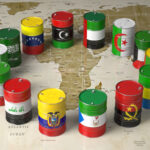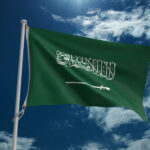(Bloomberg) – The main question for OPEC+ when it meets next month is whether to continue its oil production cuts into the second half. But it may also need to tackle the longer-term issue of production capacity.
OPEC and its allies are conducting a review of how much crude individual members are able to pump. According to JPMorgan Chase & Co., three key countries should be entitled to an upgrade.
The United Arab Emirates, Kazakhstan and Iraq stand to bolster their combined capacity by more than 300,000 bpd from next year, analyst Natasha Kaneva said in a report. Abu Dhabi has signaled an even bigger increase, with state producer ADNOC advertising this week it has bolstered its capabilities by 200,000 bpd to 4.85 MMbpd.
But the planned expansions may pose a danger for the group’s unity, and oil prices generally.
OPEC+ leader Saudi Arabia is already holding significant levels of spare capacity, and global oil demand growth is poised to slow in 2025, Kaneva notes. Stabilizing world supplies, and thus shoring up prices, becomes an increasing challenge in that environment.
“The main issue for OPEC remains in 2025,” Kaneva said. Even if the coalition maintains supply curbs this year, it “does not address 2025 imbalances.”
Accommodating the growth of members’ capacity has proved a thorny issue before for OPEC+. In 2021, the alliance almost shattered entirely when the UAE and the Saudis clashed over Abu Dhabi’s ambitions for expansion. Last year the issue flared again, and the eventual compromise led to the exit of Angola after decades of membership.







